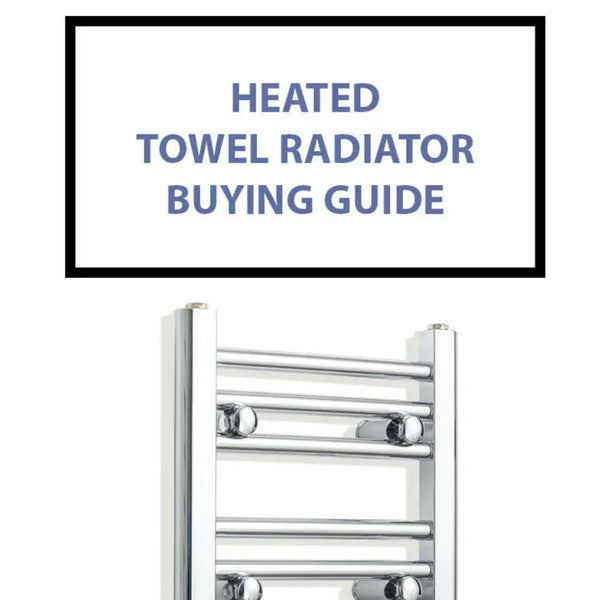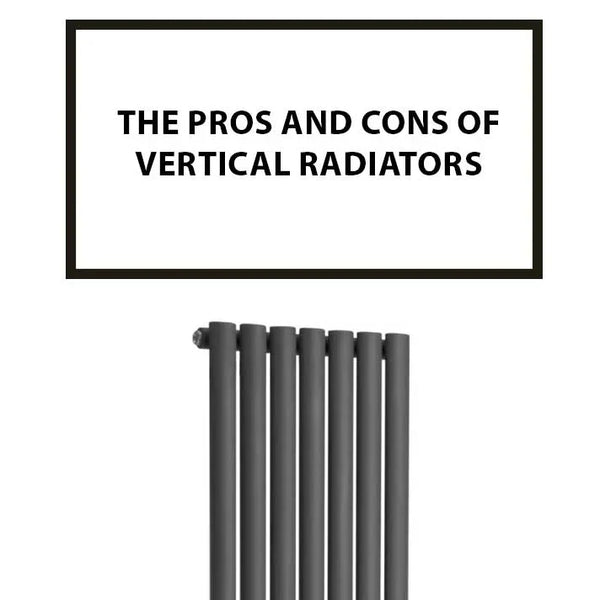How Many BTUs Do I Need for a Towel Rail?

Planning a bathroom renovation or simply looking to replace an old radiator with a stylish and practical heated towel rail? You've likely come across the term "BTU," and you're right to think it's important. Choosing the correct BTU output is the single most crucial factor in ensuring your bathroom is a warm, welcoming space and your towels are wonderfully fluffy, all without wasting money on energy.
Getting this figure right means finding the sweet spot between a chilly bathroom and an overheated one. This guide will walk you through exactly how to determine the perfect BTU requirement for your space.
What Exactly is a BTU and Why Does it Matter?
BTU stands for British Thermal Unit. In simple terms, it's a measurement of heat output. For any radiator or heated towel rail, the BTU rating tells you how much heating power it can generate.
-
Too few BTUs: Your towel rail will struggle to heat the room effectively, especially on cold winter mornings. It might warm the towels directly on it, but the room itself will remain cold, and you'll be left disappointed.
-
Too many BTUs: You'll be wasting energy and money by overheating the space. The room may become uncomfortably warm, and you'll have paid for heating power you don't need.
The Gold Standard: Using an Online BTU Calculator
For the most accurate assessment, the best method is to use an online BTU calculator. These free tools remove the guesswork by taking the specific details of your bathroom into account. To get a precise result, you'll need the following information to hand:
-
Room Dimensions: The length, width, and height of your bathroom in metres.
-
Windows: The type of glazing (e.g., single, double, or triple glazed) and the approximate area of the windows.
-
External Walls: The number of walls that are exposed to the outside air (not adjoining another room in your house).
-
Room Location: What is directly above and below your bathroom? Is it another heated room, a well-insulated loft, or an unheated garage?
-
Wall Construction: If you know it, the type of walls (e.g., solid brick or cavity walls).
Inputting these details will give you a reliable total BTU figure required to heat your entire bathroom.
For a Quick Estimate: The Rule of Thumb
If you just need a ballpark figure, you can use a simplified calculation. Remember, this is only a rough estimate.
A common method is to calculate the volume of your room in cubic feet (Length x Width x Height in feet) and multiply it by 4. For a more modern approach using metres, calculate the room's volume in cubic metres and multiply by approximately 150.
Crucial Adjustments for Real-World Accuracy
A basic calculation provides a starting point, but you must adjust it for the unique features of your room. These factors can significantly impact heat loss.
-
North-Facing Rooms: If your bathroom has a north-facing wall that receives little direct sunlight, you'll need more power to keep it warm. Add 15% to your calculated BTU.
-
Insulation Quality: Older UK properties often have less insulation. For rooms with poor insulation or solid walls, add 20% to the BTU figure.
-
Glazing: The type of windows makes a huge difference. If you have modern, efficient double or triple glazing, you can subtract 15% from the BTU requirement. For single-glazed windows, you may need to add 10-15%.
-
Exposed Location: If the room is in a very exposed location or has more than one external wall, add another 10-15%.
Sole Heater or Just for Towels? A Key Decision
How you plan to use your towel rail is critical.
-
As the Sole Heat Source: If the towel rail is the only heater in the bathroom, its BTU output must meet the total calculated BTU requirement for the room after all adjustments.
-
As a Supplementary Heater: If you already have another heat source like underfloor heating, and the rail is primarily for warming towels and adding a touch of extra warmth, you can choose a model with a lower BTU rating.
The "Towel Effect": Don't Let Towels Steal the Heat
A rail laden with thick, damp towels will have a significantly reduced ability to radiate heat into the room. The towels effectively act as an insulating layer. To counteract this, it's a wise move to build in a buffer.
As a rule of thumb, add an extra 20% to your final BTU figure to ensure your rail can both dry your towels and heat the room effectively.
Decoding the Specs: The Importance of Delta T (ΔT)
When you compare towel rails, you'll see a BTU rating, but it will be linked to a "Delta T" value, such as ΔT50. This is vital.
Delta T is the difference between the temperature of the hot water in your central heating system and the desired air temperature of your room. The current UK and European industry standard for testing and stating BTU ratings is ΔT50.
Be cautious of cheaper or older models that might state their BTU rating at ΔT60 or even ΔT70. These will appear to have a much higher output, but it's not a like-for-like comparison and is misleading. Always check that you are comparing the ΔT50 rating to get a true sense of the product's performance in a typical UK home.
By taking the time to calculate your needs accurately, you can invest with confidence, knowing your new towel rail will provide the perfect blend of comfort, style, and efficiency for years to come.
Top 15 Frequently Asked Questions about Towel Rail BTU
What does BTU mean?
BTU stands for British Thermal Unit, a measurement of thermal energy used to rate heat output of radiators and towel rails .
Why is BTU important for a towel rail?
It tells you the heat output, too low and your towels stay damp; too high and you overheat the room and waste energy .
How do I calculate the required BTU for my bathroom?
Measure volume (L×W×H), multiply by approx. 50–100 W/m³, then convert to BTU (×3.412) .
Will a towel rail heat the whole bathroom?
Yes, if its BTU matches the room’s requirement, a towel rail can serve as the primary heat source .
Why do towel rails emit less heat than radiators?
Their surface area is smaller and they’re designed for towel drying first, so their BTU output is usually lower .
What’s ΔT50 and why does it matter?
ΔT50 is the UK standard rating (average flow temp 75 °C vs. room 20 °C). Use it to compare true outputs; convert ΔT60 ratings with ×0.789 .
How much buffer should I add?
Add ~10 % buffer for general use; if the rail is the main heat source or used for drying, add 30–50 % .
How do I choose the right element wattage?
Smaller rails (<600 mm): 100–200 W; mid-size (600–1200 mm): 300–600 W; larger (>1200 mm): 600–1000 W .
What is a dual‑fuel towel rail?
A hybrid that runs on central heating in winter and electric in summer for year‑round use .
Are electric towel rails expensive to run?
Not significantly, 300 W element costs ~8 pence/hour at £0.27/kWh; bigger elements cost proportionally more .
Can towel rails run 24/7?
Yes, most have thermostats and limiters. Using a timer reduces energy use .
What clearances should I leave around a towel rail?
Leave about 100 mm each side, 150 mm above, and 150 mm from the floor to optimise airflow.
Can you install a towel rail in a wet room?
Yes, choose wet‑rated models and ensure compliance with electrical regulations and zones.
Do curved rails dry towels better than flat ones?
Curved designs allow better air circulation behind towels, improving drying speed .
Is professional installation necessary?
Yes, hydronic rails need plumbing, and electrics must be fitted by a qualified electrician to meet safety standards.







